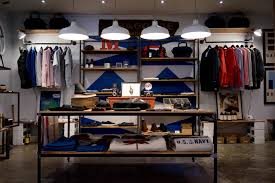In the competitive world of retail, capturing customer attention is crucial. An eye-catching retail display can be the difference between a customer walking by and making a purchase. Whether you’re working with a large department store or a small boutique, these design tips will help you create engaging and effective retail displays.
Understand Your Audience
Before diving into design, it’s essential to understand who your customers are. What are their preferences? What catches their eye? Conducting market research to understand your target demographic can provide valuable insights. Knowing whether your audience prefers minimalist designs or vibrant, colorful setups can guide your design choices and ensure your display resonates with potential buyers.
Create a Focal Point
A focal point is the centerpiece of your display and should be the first thing that catches a customer’s eye. This could be a best-selling product, a new arrival, or a particularly visually appealing item. Use lighting, colors, and positioning to draw attention to this focal point. An effective focal point can capture interest and encourage customers to explore the rest of the display.
Use Color Strategically
Color plays a significant role in retail display design. Different colors evoke different emotions and reactions. For example, red can create a sense of urgency and excitement, while blue can be calming and trustworthy. Consider the psychological impact of colors and how they align with your brand and the message you want to convey. Don’t be afraid to experiment with bold colors to make your display stand out.
Incorporate Visual Merchandising Techniques
Visual merchandising involves the strategic placement of products to maximize sales. Grouping similar items together, using symmetry, and creating layers can enhance the visual appeal of your display. For instance, placing smaller items in the front and larger items at the back can create depth and make the display more engaging. Regularly updating and rotating products in your display keeps it fresh and encourages repeat visits from customers.
Leverage the Power of Lighting
Lighting can make or break a retail display. Proper lighting not only highlights your products but also sets the mood and ambiance of your space. Use spotlights to accentuate key items and softer lighting to create a welcoming atmosphere. LED lights are a popular choice due to their energy efficiency and versatility. Experiment with different lighting techniques to find what best enhances your display.
Utilize Banners Effectively
Physical banners are an excellent way to attract attention and communicate key messages. Whether it’s announcing a sale, promoting a new product, or simply showcasing your brand, banners can be highly effective. Place banners at eye level and ensure the text is large and readable from a distance. Choose vibrant colors and high-quality materials to make your banners stand out. Remember, the goal is to capture attention quickly, so keep the message concise and impactful.
Maximize Space
Efficient use of space is crucial in retail display design. Even in small spaces, you can create impactful displays by thinking creatively. Use vertical space with shelves and hanging displays, and consider mobile fixtures that can be easily moved and rearranged. Ensuring your display is not too cluttered is equally important; a well-organized, tidy display is more inviting and easier for customers to navigate.
Engage the Senses
While visual appeal is paramount, engaging other senses can enhance the overall experience. Consider incorporating elements like scent, sound, and touch. For example, a subtle fragrance can make your space more inviting, and background music can set the tone and pace for shopping. Interactive displays that encourage customers to touch and try products can also be highly effective.
Keep It Simple
Simplicity is often key to a successful retail display. A cluttered or overly complex display can overwhelm customers and deter them from engaging. Focus on a few key elements and ensure they are well-presented. Clean lines, ample space, and a clear layout can make your display more attractive and easier for customers to understand.
Regular Maintenance
A stunning display can quickly lose its appeal if it’s not well-maintained. Regularly check your displays for dust, damage, and disorganization. Rotate products to keep the display fresh and update any signage or banners as needed. Keeping your displays in top condition reflects positively on your brand and ensures a consistent customer experience.
Test and Iterate
Finally, don’t be afraid to experiment with different display strategies. Track customer reactions and sales data to understand what works and what doesn’t. Use this information to refine and improve your displays continuously. Testing different layouts, color schemes, and focal points can help you discover the most effective design for your retail space.
In conclusion, creating eye-catching retail displays requires a combination of creativity, strategy, and attention to detail. By understanding your audience, using colors and lighting effectively, incorporating physical banners, and regularly updating your displays, you can attract more customers and boost sales. Remember, the goal is to create a visually appealing and engaging environment that enhances the overall shopping experience.




